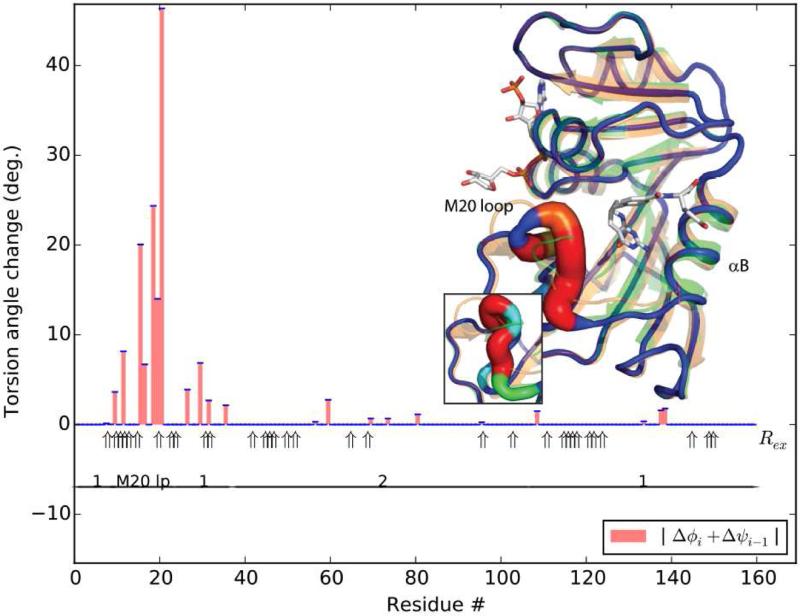Figure 5.
Starting from the closed E. coli DHFR structure (orange), parsimonious superposition (color-coded by dihedral change) is fit to the occluded form (green). Optimized using λ=1.0 (graph and full molecule), the RMSD is 0.85 Å. With λ=0.3 (inset), RMSD drops to 0.74 Å through increased latitude to fit the local configuration of loop M20. Rex is shown for 3 complexes, both occluded and closed (Osborne et al., 2001). Rex in the FG and GH loops, near residues 120 and 148 respectively are thought to reflect changing interactions with the M20 loop (Osborne et al., 2001) due to motions of the loop and rotation of dihedrals near helix B (i.e. long-range effects), while those near residue 45 might reflect transient cofactor dissociation (Osborne et al., 2001), so the absence of large dihedral changes in these regions is not unexpected.

